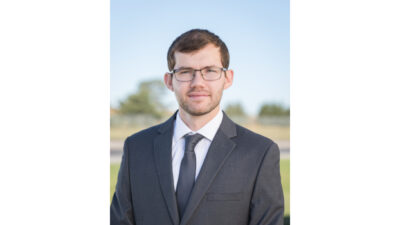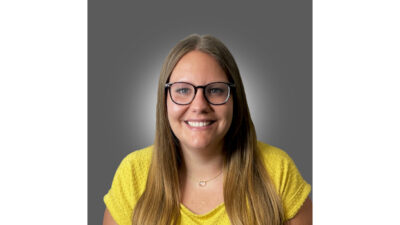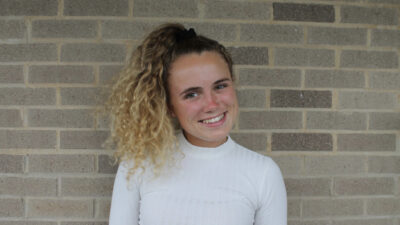Many processes require that a volume of material inside a container be held at a uniform temperature. In many cases, this uniform temperature must also be selectable over a range and must accommodate multiple boundary conditions. Such systems include chemical reactors, heat treatment and sintering furnaces, curing ovens, heated enclosures for process instruments, fermentation vats, and material...
Many processes require that a volume of material inside a container be held at a uniform temperature. In many cases, this uniform temperature must also be selectable over a range and must accommodate multiple boundary conditions. Such systems include chemical reactors, heat treatment and sintering furnaces, curing ovens, heated enclosures for process instruments, fermentation vats, and material property test chambers.
The model container includes a large structural support at the top that dissipates heat, as they often do in real life.
Maintaining a uniform temperature in such situations requires careful analysis of all the sources of heat gain and loss, along with a strategy for temperature measurement, sensor location, and heater control.
The supporting structure for a container can be a significant heat loss path. Heating the supports may help, but unless independently controlled, this strategy can actually degrade temperature uniformity under variations in boundary conditions or set-point temperatures. An independent zone of temperature control, or thermal anchor, can substantially improve uniformity for a range of conditions.
Model geometry
Consider a simplified model of a cylindrical container, 300 mm tall, and supported at one end. The container is vertical and includes a central tube to inject or remove material to or from the temperature-controlled volume. The model container is partially filled to the 200 mm level. Obviously this is a very small model, but the concepts applied are scalable to a vessel of virtually any size.
A relatively large mass representing the structure and associated machinery is included at the cylinder’s top end. Electric heaters are positioned on the container’s outside. The thermal analysis considers conduction between parts of the model as well as convective and radiant heat loss to the environment.
A two-dimensional, axisymmetric finite element steady state representation is used to illustrate thermal behavior. The thermal boundary condition at the bottom of the container approximates a well-insulated surface.
Uniform heat distribution case
In case 1, the contents suffer colder areas even though incoming heat distribution is even.
Case 1 assumes a uniform distribution of heat generation over the surface area covered by the heater. A common misconception is that uniform power distribution produces uniform temperature distribution. The graphic shows, however, that this is not always the case.
A significant portion of the heat flows up along the container wall and therefore must be replaced by the heater. Since the heater is designed for uniform heat generation, the replacement heat must flow by conduction, convection, or radiation from the heater to other locations. Since heat flow requires a temperature difference, heat generated away from the heat-loss location creates a temperature gradient. The temperature inside the container varies over a 34° C interval from 81° C to 115° C.
Since the container is partially filled with heated material, the temperature falls off more quickly after exiting the temperature controlled volume, crossing the boundary between the heated material and the airspace above this material. A similar abrupt change exists at the boundary between the air space and the large mass representing the structure. These abrupt changes are the result of discontinuities in the material properties in adjacent regions, such as between the sample and the air.
Heater zoned for 100° C set-point
In case 2, a second heater slows heat loss from the sample by warming the structural support.
Case 2 includes a heater designed to produce power distributed between two zones such that temperature uniformity is optimized at a set-point of 100° C. These two areas are labeled “top heater zone” and “bottom heater zone” in the model graphic. As in the first case, the set-point temperature is measured at sensor location 1.
Since a significant fraction of the heat loss flows by conduction along the container wall, the top heater zone must produce more heat per unit area than the lower heater. Optimizing the heat generated in the top 50 mm of heated area for temperature uniformity yields a temperature distribution as shown in the case 2 graphic.
The narrow temperature range in the sample volume shows that uniformity can be controlled accurately. Temperature variation in the sample volume from the temperature at sensor location 1 is now less than 0.25° C.
Remember that in the model, the attachment of the container is a major source of heat loss and that other potential heat sinks, such as the bottom of the container and the central sample injection tube, have been minimized. If these other heat sinks were significant, additional zones of heat generation with varying power density, might be needed to achieve similar temperature uniformity. The effects of sensor and controller error are also neglected here.
Temperature raised to 400° C
If the heater from case 2 is optimized for one operating condition, but used for a higher set-point temperature, uniformity suffers. While the heater can produce additional power to increase the temperature of the container, it was designed to optimize performance for the 100° C set-point. At a 400° C set-point, the proportion of heat lost via conduction upwards along the container wall relative to the total heat loss changes since there is now a greater difference between the set-point and environmental temperature. A heater with a fixed power distribution cannot accommodate both set-point temperatures.
Case 3 shows what can happen when a heater is forced to work outside its optimal temperature setting.
In case 3, the temperature variation is more than an order of magnitude greater than for case 2. The top heater produces too much heat, causing the temperature in the upper parts of the sample to increase. This leads to a reduction in the heat required from the lower heater to maintain the set point and a temperature below set-point in the lower parts of the sample volume.
Adding a thermal anchor
A thermal anchor can help overcome these problems. A thermal anchor can be thought of as a thermal buffer, an active heat shield, or a heat choke. It allows the proportion of heat generated by the top heater to be modulated by a separate temperature sensor. With an appropriately located sensor, the thermal anchor can improve temperature uniformity over a range of set-points and environmental conditions. In this model, the top heater zone is hardly heating the sample at all but is heating the walls of the vessel to eliminate any temperature difference that would cause heat to flow into the colder area and structural mass.
Case 4 shows that clever placement of heaters, sensors and control zones can allow the unit to operate well at any temperature.
Case 4 illustrates the temperature distribution at 400° C, but now a thermal anchor has been added. Temperature uniformity has improved by an order of magnitude, now deviating less than 1° C from the set-point. The top heater zone was controlled to achieve a temperature of 400° C at sensor location 2 between the heater and the container wall and at the bottom edge of the top heater section, which is 230 mm above the bottom of the container. The remaining area of the heater was controlled to hold the set point temperature at sensor location 1.
The sensor location is important. Locating a sensor at the center of the top heater zonether systems, a sensor location between the sample volume and the independently controlled heat generation zone should be selected.
Conclusions
Many variations on the general heated container system are possible in laboratory and industrial applications. Maintaining tight control of the temperature in all locations within the container requires system designs that compensate for heat losses in a manner that preserves temperature uniformity. If this compensation must accommodate any significant range of boundary conditions or changes in set-point temperature, one or more adjustable sources of heat, such as the thermal anchors described here, may be needed to preserve temperature uniformity over the range.
The added cost and complexity of using such devices should be measured against the level of uniformity required for the given application. Systems needing only coarse uniformity may only require careful use of insulation or a compromise in the heater design to achieve desired performance.
The magnitude of temperature variation depends on the size of the system, the properties of the materials used, the power required to maintain the set-point temperature, and the time available for achieving steady state conditions. Using the concepts presented here can help improve uniformity within various system constraints for systems requiring tight uniformity.
Author Information
Mark Everly is principal systems engineer for Watlow’s Single Iteration Division. Reach him at [email protected] .



